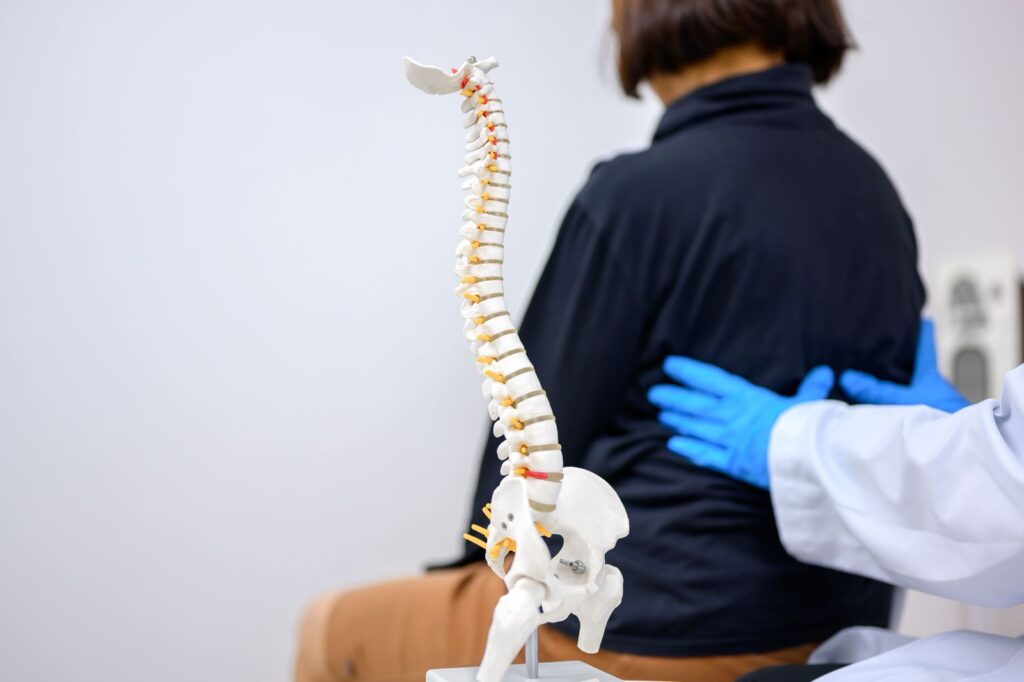Spinal fusion surgery is a highly effective treatment for many people suffering from severe back pain, instability, or deformities in their spine. If you’re dealing with chronic and life-disrupting pain, this procedure might offer a way to restore stability and function to your back.
But what exactly does spinal fusion involve? In this article, we’ll walk you through what spinal fusion surgery is, its benefits, risks, and what you can expect during the process.
Spinal Fusion Surgery in a Nutshell
A spinal fusion surgery joins two or more vertebrae in the spine, effectively making them one solid bone. A spine surgeon uses bone graft material to encourage the growth of new bone between the spinal bones. Over time, the bone graft heals and fuses the vertebrae. In some cases, metal rods, plates, or screws hold the bones in place while the fusion process occurs.
Doctors often recommend this procedure for conditions that affect the stability of the spine, such as spinal stenosis, degenerative disc disease, or when there’s an abnormal curvature like scoliosis. Spinal fusion helps to alleviate pain and prevent further damage by providing a stable, solid spinal column.
Types of Spinal Fusion Procedures
There are a few approaches to this type of surgical treatment. Two of the most common procedures are anterior spinal fusion and posterior spinal fusion.
- Posterior Spinal Fusion: This involves making an incision in your back, through which the surgeon accesses the spine. The procedure accesses your spine from the rear (posterior) of the body, and the spinal vertebrae are fused with bone graft material, often supported by metal rods or plates.
- Anterior Spinal Fusion: In this type of spinal fusion, the surgeon accesses the spine from the front (anterior) of your body. This approach is common in lumbar spinal fusion, particularly in cases where the discs between the vertebrae need removal
There are also more specialized procedures, such as lumbar interbody fusion and transforaminal lumbar interbody fusion. These involve removing damaged discs and inserting bone grafts in the disc space to stabilize the spine.
Ultimately, the choice of technique depends on your specific condition and where the fusion needs to occur. Those seeking advanced care can explore spinal fusion surgery Singapore patients have come to trust. The centers there offer a range of cutting-edge techniques performed by experienced specialists. Their goal is to stabilize the spine and relieve pain, whether through traditional or more specialized surgical treatments.
Benefits of Spinal Fusion Surgery
This type of spine surgery offers several key benefits, especially for those dealing with severe spinal conditions:
Pain Relief
By stabilizing the spine, spinal fusion can alleviate chronic pain caused by certain conditions. The surgery reduces the motion between the affected vertebrae, which can significantly lower pain levels if instability or abnormal spine movement is the main cause of pain.
Restoration of Stability
Spinal fusion can provide much-needed stability for people with an unstable spine. This is particularly beneficial if your spinal bones are at risk of shifting or moving out of place, which can cause further pain or nerve damage.
Improved Function
This surgical procedure can improve the overall function of the spine. Lumbar spinal fusion may allow you to return to more active routines by reducing back pain and enhancing mobility.
Prevention of Further Damage
In certain conditions like scoliosis or kyphosis (abnormal curvatures), spinal fusion can prevent the curve from worsening, which could lead to more severe pain or even paralysis over time. Fusing the affected vertebrae helps to stabilize the spine and prevent these dangerous conditions from progressing.
Spinal fusion surgeries are ideal for situations that don’t respond to non-surgical methods and conservative treatments. Like any surgical procedure, however, spinal fusion comes with some risks and possible complications.
Risks and Possible Complications
While spinal fusion has a high success rate, understanding the potential downsides is important in making an informed decision.
Infection
Any surgery carries a risk of infection at the incision site or deeper within the spine. Antibiotics are often enough to prevent this, but it might require additional surgery in rare cases.
Blood Clots
The use of general anesthesia and prolonged immobility during surgery increases the risk of blood clots, particularly in the legs. Your surgical team will take measures to reduce this risk, such as blood thinners and encouraging movement early after surgery.
Non-Union or Pseudarthrosis
Sometimes, the bone graft does not heal properly, leading to what’s called pseudarthrosis or non-union. This condition can delay recovery and may require additional surgeries or treatments, such as bone graft material or steroid injections.
Nerve Damage
While rare, there’s a possibility of nerve injury around the spinal cord area during the surgery. A patient may experience numbness, weakness, or pain in the legs or other parts of the body.
Most patients also experience discomfort after the procedure. Pain medication and physical therapy can manage the pain and aid in recovery. However, a small percentage of patients may experience ongoing discomfort after fusion surgery.

The Recovery Process
The recovery process varies depending on the individual, the type of fusion performed, and the extent of the procedure. Typically, you can expect to stay in the hospital for several days while your surgical team monitors your condition. Your physician will prescribe pain medicine to manage any discomfort and recommend physical therapy to help regain mobility.
You may also need to avoid heavy lifting or strenuous activities for several weeks or even months after the procedure to allow the bone graft to fully heal. In some cases, you might need to use a brace to stabilize the spine during the healing process.
The Bottomline
Spinal fusion surgery is a powerful tool for those suffering from severe spinal conditions. This procedure can provide lasting relief and improve quality of life—whether you’re dealing with spinal stenosis, degenerative disc disease, or an unstable spine. However, it’s essential to weigh the benefits and risks carefully. Discuss your options with your healthcare provider, and understand what the recovery process involves. By doing so, you can make an informed decision about whether spinal fusion is the right step for you.
